To stand or not to stand?
Tue, 14 Apr 2015
At Vidak we have been researching and testing the current “craze” of standing in the workplace. I have been trying to formulate an opinion about its context in the long term, as opposed to the immediate reaction to the published researched benefits and the recent affordability of a sit to stand workstation.
I am a big advocate for the health benefits of standing. Humans are not made to sit in a chair for long periods of time, not only in an office, but also in cars, planes or at home on the couch in front of back-to-back Super Rugby games. It not only affects your back and posture, but has huge negative impacts on digestion, blood flow and weight gain, which in turn can cause major health problems. Even more so for people who are largely inactive in their private lives and don’t participate in regular exercise or other activities conducive to a healthy life style.
Our research has consisted of workplace feedback, active research through popular media and studies, and expert opinion. A recent research piece out of the UK surveyed 2000 people and found “45% of women and 37% of men spend less than 30 minutes a day up on their feet at work. 50% of the people surveyed eat their lunch sitting at their desks”. (BBC News)
This is quite disturbing, and my belief is this links back to workplace design and ways of working that have become tradition and therefore caused bad habits. At Vidak, we have a lot of stand up meetings and this keeps our people moving and the meetings more concise and productive through people being more energized and less “comfortable”.
I made the move to stand when working in my office in Wellington. I didn’t have the company supply me a sit to stand workstation. Instead, we designed a Blade leaner that provided a stand up solution that anyone in the office can use. It has two dynamic ergonomic arms to hold a laptop and a flat screen and power connection to charge a variety of mobile devices via standard GPO powerpoint or USB. I spend on average two and half days in the office, and am regularly heading out to meetings, so it makes no sense to give me a dedicated workstation that goes up and down to suit me. It makes far more sense to offer a solution that anyone can use (individually or with others) as an unassigned work point, and the fact that it is only at standing height (and we haven’t put stools around it) means it can only be used for standing.
We have recently completed workplace fit outs for two major clients that are largely sit to stand working platforms. Every worker within these environments has a sit to stand workstation allocated to them to use. It is their choice whether they sit or stand at them. While people do stand as well as sit, due to a variety of factors including regular occupancy of the workstations or habit, it is often only a small percentage of workstations that are regularly adjusted from seated to standing height (estimated 5-6%). I will explain my theory as to why this is later on.
Late last year I met with standing “cheerleaders” Kelly (Physical Therapist and Author of Becoming a Supple Leopard) and Juliette Starrett of San Francisco Crossfit. They are very vocal on the health risks of regular sitting (to the point where Kelly squatted while we sat for our catch up, and proceeded to start the meeting saying “if we are pushing sitting then we may as well be peddling cancer”) and are working on education at primary school level to promote the health benefits of standing. (Stand Up Kids)
The Starretts’ view is provide as little as possible seating, and for work points they should be standing only, not sit to stand. In other words, take away the choice to sit at a workstation. They want to see sitting workstations gone.
I take a more conservative line and say while there are obvious health benefits to standing, people still generally choose to sit, rather than stand, when working. So instantly taking away all seated options will cause all sorts of other issues for your workplace. What we need to be doing is educating people more on why they should be standing, not sitting. Just giving everyone a sit to stand workstation and assuming they will make the right choice may not achieve the former. Offering more standing only solutions and redesigning the workplace may do though.
There are a few reasons why sit to stand workstations don’t get used:
- Location – the person standing in the middle of a pod of workstations feels exposed and out of place (or embarrassed).
- Education – people don’t know how to use the workstation or the actual benefits in doing it.
- Effort – perceived or actual – some solutions are easier to use than others and some people cannot be bothered after the novelty wears off.
- Need – no perceived need to stand, then people don’t.
- Habit – people are used to sitting at their workstation and find it hard to break the trend.
Here are some of my solutions:
- Don’t focus on the workstation only – look at other options; standing leaners for individual work or meetings in company café or in project space – test this first and if these solutions are being used, then maybe the next step is to test a percentage of workstations.
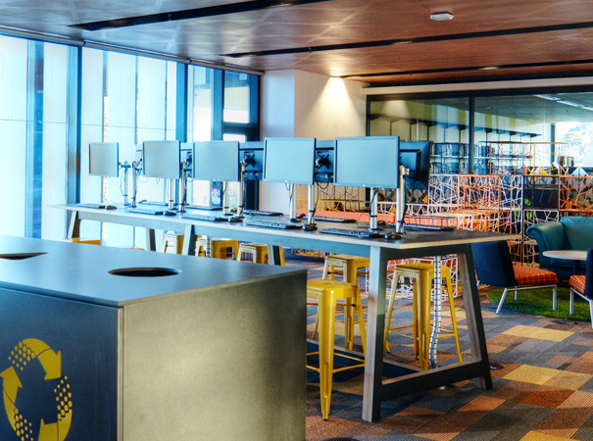
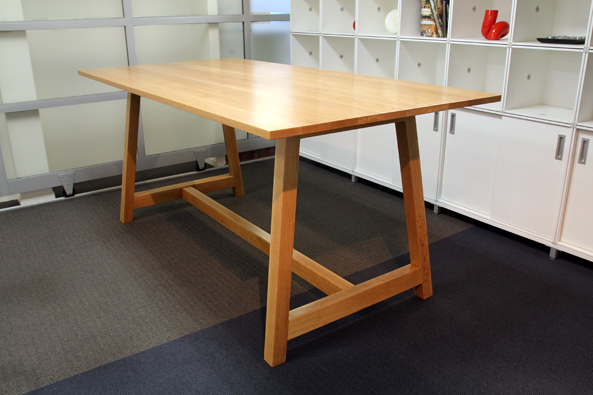
- Location in the workplace – if you are finding it hard to integrate sit to stand into current layouts, look at zoned areas or key locations where it will fit better.
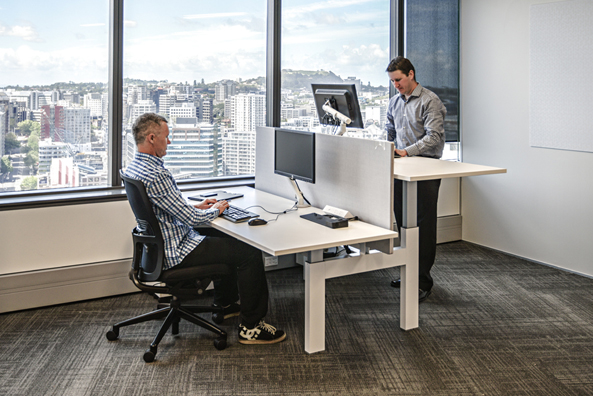
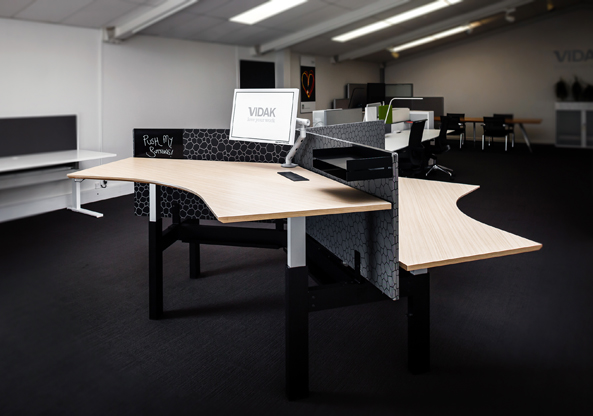
- Create a more dynamic free flowing office – mobile technology and support with standing alternative work points set up to support the work and the technology. By having people moving around in the right designed workplace they will naturally stand more – this links to point 1.
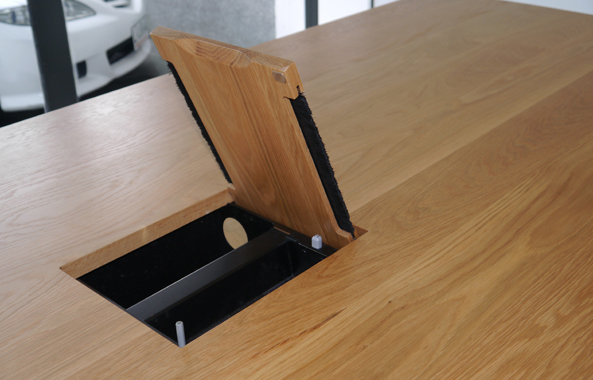

- If you invest in sit to stand – invest in the education of why people should use it and test that they are.
My final word on this is that standing in the workplace needs to be happening more. I’m loving it! My neck and back, that have both been injured through sport and given me pain and discomfort over the past 10 years, have felt better than ever since I took up standing for work over a month ago. Take the opportunity to look at your workplace (layout, technology, culture) and think less traditional and more dynamic and see how you could integrate more standing for your workforce. They will thank you for it and your business will benefit.
Jono Vidak - Director – Vidak Limited